How to Identify a Reliable Oil Immersed Transformer Supplier in China?
Are you struggling to find a trustworthy oil immersed transformer supplier in China? You’re not alone. Many buyers face challenges navigating the complex Chinese manufacturing landscape. But what if you had a clear guide to help you identify the most reliable suppliers?
To identify a reliable oil immersed transformer supplier in China, check for IEC/ISO certifications, proven export experience, strong manufacturing capacity, and compliance with international quality standards. A qualified supplier ensures product safety, consistent lead times, and support for utility or industrial-grade projects.

In this comprehensive guide, I’ll walk you through the essential steps to identify and select a dependable oil immersed transformer supplier in China. Whether you’re a seasoned buyer or new to sourcing from China, this article will provide you with valuable insights to make an informed decision.
Why Supplier Selection Matters for Oil Immersed Transformers?
Have you ever considered the long-term implications of choosing the wrong transformer supplier? The consequences can be severe. But why exactly is supplier selection so crucial when it comes to oil immersed transformers?
Selecting the right oil immersed transformer supplier is critical because it directly impacts product reliability, project timelines, and long-term operational costs. A reliable supplier ensures consistent quality, timely delivery, and compliance with international standards. Poor supplier choice can lead to equipment failures, project delays, and significant financial losses.
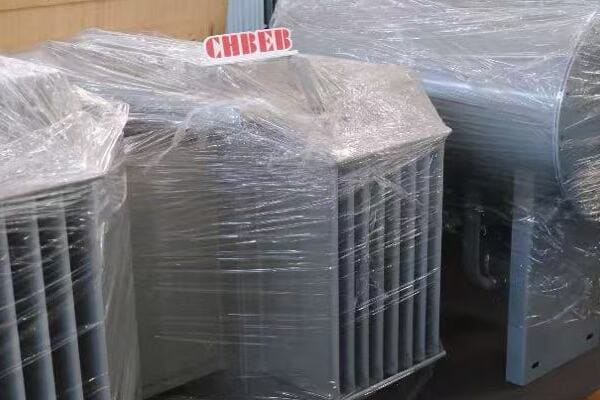
The Importance of Careful Supplier Selection
Let’s explore why choosing the right supplier is so crucial:
- Product Quality and Reliability
- Compliance with International Standards
- Project Timeline Adherence
- Long-term Support and Maintenance
- Financial Implications
Product Quality and Reliability
The quality of your transformer directly affects your entire power system:
- High-quality transformers ensure stable power supply
- Reliable products minimize downtime and maintenance costs
- Poor quality can lead to catastrophic failures and safety hazards
I once worked on a project where a client chose a supplier based solely on low price. Within a year, the transformer failed, causing a week-long shutdown of their facility. The cost of lost production far exceeded the initial savings.
Compliance with International Standards
Adherence to standards is non-negotiable:
- Ensures safety and interoperability
- Facilitates global market access
- Reduces legal and regulatory risks
During a recent international project, our chosen supplier’s IEC compliance was crucial in obtaining project approvals across multiple countries, saving time and resources.
Project Timeline Adherence
Reliable suppliers respect project schedules:
- Consistent lead times prevent project delays
- Ability to handle urgent orders when needed
- Clear communication on production status
Here’s a quick comparison of timeline impacts:
| Supplier Type | Average Delay | Impact on Project |
|---|---|---|
| Reliable | 0-2 weeks | Minimal, manageable |
| Unreliable | 4-8 weeks | Significant, costly |
Long-term Support and Maintenance
After-sales support is crucial for transformer longevity:
- Access to spare parts and technical support
- Warranty fulfillment and claim processing
- Assistance with upgrades and retrofits
I recall a case where a client struggled with a transformer issue years after installation. The supplier’s prompt support and availability of compatible parts saved them from a costly full replacement.
Financial Implications
The right supplier impacts your bottom line:
- Reduces total cost of ownership
- Minimizes risk of unexpected expenses
- Enhances the value of your investment
Key reasons why supplier selection matters:
- Ensures consistent product quality and reliability
- Guarantees compliance with necessary standards and regulations
- Helps maintain project timelines and budgets
- Provides crucial long-term support and maintenance
- Significantly impacts overall project economics
In my experience, the time and effort invested in selecting the right supplier always pays off. I’ve seen projects succeed spectacularly with the right partner, and others fail miserably due to poor supplier choice.
For instance, in a recent large-scale grid modernization project, our carefully selected supplier not only delivered high-quality transformers on time but also provided invaluable technical support during installation and commissioning. This level of partnership was crucial to the project’s success.
As we move forward to discuss key certifications to look for, remember that these certifications are not just paperwork – they’re indicators of a supplier’s commitment to quality and international standards. They form a crucial part of identifying a reliable transformer supplier in China.
Key Certifications to Look For (IEC 60076, ISO 9001, CE)?
Are you aware of the critical certifications that signal a reliable oil immersed transformer supplier in China? In the complex world of international standards, knowing which certifications matter can be challenging. But which specific certifications should you prioritize, and why are they so important?
Key certifications for reliable Chinese oil immersed transformer suppliers include IEC 60076 for transformer-specific standards, ISO 9001 for quality management systems, and CE marking for European market compliance. These certifications ensure product quality, manufacturing process reliability, and adherence to international safety and performance standards. They are crucial indicators of a supplier’s capability to meet global requirements.
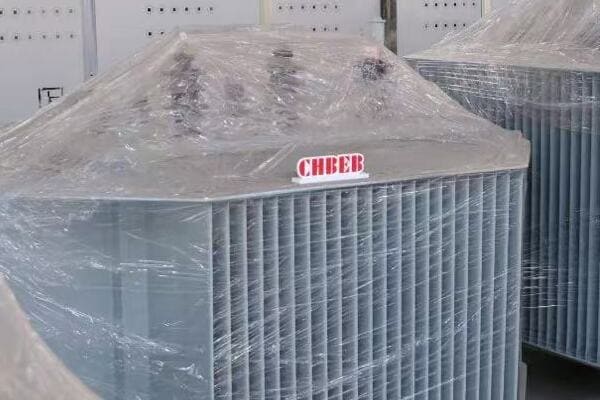
Understanding Critical Certifications
Let’s explore the most important certifications:
- IEC 60076 – International Electrotechnical Commission Standard
- ISO 9001 – Quality Management System
- CE Marking – European Conformity
- Additional Relevant Certifications
- Verifying Certification Authenticity
IEC 60076 – International Electrotechnical Commission Standard
This is the gold standard for power transformers:
- Covers design, manufacturing, and testing requirements
- Ensures global compatibility and performance standards
- Critical for international project approvals
I recently worked on a project where the client insisted on IEC 60076 compliance. This certification was key in winning a major contract for a Middle Eastern power distribution project.
ISO 9001 – Quality Management System
ISO 9001 certification indicates a robust quality management system:
- Ensures consistent manufacturing processes
- Demonstrates commitment to continuous improvement
- Enhances customer satisfaction through quality assurance
During a factory audit, I noticed how an ISO 9001 certified supplier had clear, documented processes for every stage of production, significantly reducing errors and inconsistencies.
CE Marking – European Conformity
Essential for products entering the European market:
- Indicates compliance with EU health, safety, and environmental standards
- Facilitates market access across Europe
- Demonstrates adherence to rigorous safety requirements
Here’s a quick overview of these key certifications:
| Certification | Focus Area | Importance |
|---|---|---|
| IEC 60076 | Transformer-specific standards | Critical for technical compliance |
| ISO 9001 | Quality management | Ensures consistent manufacturing quality |
| CE Marking | European market compliance | Essential for EU market access |
Additional Relevant Certifications
Other certifications to consider:
- IEEE C57.12 for North American markets
- GOST-R for Russian and CIS markets
- SASO for Saudi Arabian standards
Verifying Certification Authenticity
Always verify the authenticity of certifications:
- Request copies of certificates and check their validity
- Verify through certification bodies’ official websites
- Be wary of suppliers reluctant to provide certification details
Key points to remember about certifications:
- IEC 60076 is crucial for ensuring transformer-specific compliance
- ISO 9001 indicates a reliable quality management system
- CE marking is essential for European market access
- Additional certifications may be required for specific markets
- Always verify the authenticity and current validity of certifications
In my experience, certifications are more than just paperwork – they’re a reflection of a supplier’s commitment to quality and international standards. I’ve seen cases where properly certified suppliers consistently delivered higher quality products and were more reliable in meeting project requirements.
For example, during a recent project in Southeast Asia, our choice of an IEC 60076 and ISO 9001 certified supplier proved invaluable. Their adherence to these standards not only ensured product quality but also streamlined the approval process with local authorities, saving significant time and resources.
As we move on to discuss manufacturing capacity, remember that certifications provide a solid foundation for assessing a supplier’s capabilities. However, they should be considered alongside other factors like production capacity and quality control measures, which we’ll explore next.
Manufacturing Capacity: Factory Scale, Automation, and Quality Control?
Are you wondering how to assess a Chinese supplier’s true manufacturing capabilities for oil immersed transformers? Understanding a factory’s production capacity and quality control measures is crucial. But what specific aspects should you look for to ensure a supplier can meet your demands consistently and with high quality?
Evaluating manufacturing capacity involves assessing factory scale, level of automation, and quality control processes. Look for suppliers with large production facilities, modern automated equipment like vacuum drying chambers and winding machines, and comprehensive quality control systems. A robust manufacturing setup ensures consistent quality, timely delivery, and the ability to handle large or complex orders.
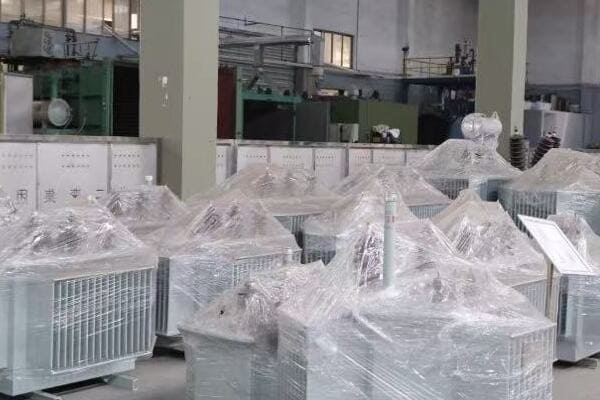
Key Aspects of Manufacturing Capacity
Let’s explore the critical elements to consider:
- Factory Scale and Layout
- Automation and Technology
- Quality Control Processes
- Production Capacity and Flexibility
- Research and Development Capabilities
Factory Scale and Layout
The size and organization of a factory can indicate its capabilities:
- Large, well-organized facilities often indicate higher capacity
- Efficient layout suggests streamlined production processes
- Dedicated areas for different production stages show specialization
I recently visited a transformer factory in Jiangsu province. Its 50,000 square meter facility with clearly defined production zones impressed me, showcasing their ability to handle large-scale orders efficiently.
Automation and Technology
Modern, automated equipment is crucial for consistent quality:
- Look for automated winding machines for precise coil production
- Vacuum drying and oil filling systems ensure high-quality insulation
- Advanced testing equipment indicates commitment to quality
During a factory tour, I was particularly impressed by a supplier’s fully automated core cutting and stacking system. This technology ensured precise core assembly, crucial for transformer efficiency.
Quality Control Processes
Robust quality control is essential:
- Check for in-process quality checks at each production stage
- Look for well-equipped testing laboratories
- Assess the qualifications of quality control personnel
Here’s a quick overview of key quality control aspects:
| Stage | Quality Control Measure | Importance |
|---|---|---|
| Input Materials | Material testing and verification | Ensures quality components |
| Production | In-process checks and testing | Catches issues early |
| Final Product | Comprehensive testing (e.g., load loss, temperature rise) | Verifies overall quality |
Production Capacity and Flexibility
Assess the supplier’s ability to meet your specific needs:
- Annual production capacity for different transformer types
- Ability to handle rush orders or large volume requirements
- Flexibility in customizing products to specific requirements
I once worked with a supplier who could produce 10,000 distribution transformers annually. This capacity was crucial in securing a large contract for a national grid upgrade project.
Research and Development Capabilities
R&D investment indicates long-term reliability:
- Look for dedicated R&D departments
- Assess recent innovations or patents
- Consider collaborations with universities or research institutions
Key points to consider about manufacturing capacity:
- Factory scale and layout indicate production capabilities and efficiency
- Level of automation directly impacts product consistency and quality
- Comprehensive quality control processes are essential for reliability
- Production capacity should match your project requirements
- R&D capabilities suggest a supplier’s commitment to improvement and innovation
In my experience, a supplier’s manufacturing capacity is a key indicator of their ability to deliver quality products consistently. I’ve seen cases where seemingly minor differences in production capabilities led to significant variations in product quality and delivery reliability.
For instance, during a recent project requiring 500 custom-designed transformers, we chose a supplier with advanced automation and a strong R&D team. Their ability to quickly adapt their production line to our specific requirements and maintain consistent quality throughout the large order was crucial to the project’s success.
As we move on to discuss export experience and global project references, remember that manufacturing capacity is just one piece of the puzzle. A supplier’s track record in international markets can provide valuable insights into their reliability and ability to meet diverse project requirements.
Export Experience and Global Project References?
Are you curious about how to gauge a Chinese supplier’s capability in handling international transformer projects? Export experience and global references are crucial indicators of a supplier’s reliability and adaptability. But how can you effectively assess these aspects, and what do they tell you about a supplier’s suitability for your project?
Evaluating a supplier’s export experience involves examining their track record in international markets, types of projects completed, and client testimonials. Look for suppliers with a diverse portfolio of global projects, experience in your target region, and positive feedback from international clients. Strong export credentials indicate a supplier’s ability to navigate international standards, logistics, and diverse project requirements.

Assessing Export Experience and References
Let’s explore key aspects to consider:
- Range of Export Markets
- Types of International Projects
- Client Testimonials and Case Studies
- Handling of International Standards and Regulations
- After-Sales Support in Global Markets
Range of Export Markets
A wide export reach indicates versatility:
- Look for experience in diverse geographical regions
- Consider their familiarity with your target market
- Assess their ability to handle different regulatory environments
I recently worked with a supplier who had successfully delivered transformers to over 50 countries. Their experience in navigating diverse regulatory landscapes was invaluable for our multi-country project.
Types of International Projects
Diverse project experience is crucial:
- Check for a mix of utility, industrial, and specialized projects
- Assess their experience with projects similar to yours
- Look for handling of different voltage levels and capacities
During a recent tender, a supplier’s experience in both urban grid upgrades and rural electrification projects in Southeast Asia made them stand out as a versatile choice.
Client Testimonials and Case Studies
Real-world feedback provides valuable insights:
- Request detailed case studies of relevant projects
- Look for testimonials from reputable international clients
- Pay attention to how they handled challenges in past projects
Here’s a quick guide to assessing references:
| Aspect | What to Look For | Why It Matters |
|---|---|---|
| Project Scope | Similarity to your requirements | Indicates relevant experience |
| Client Feedback | Positive comments on quality and service | Suggests reliability |
| Problem Solving | Examples of overcoming challenges | Shows adaptability |
Handling of International Standards and Regulations
Compliance with global standards is essential:
- Check their track record in meeting IEC, IEEE, and other relevant standards
- Assess their experience with country-specific regulations
- Look for certifications relevant to your target market
I recall a project where a supplier’s familiarity with both IEC and ANSI standards was crucial in designing transformers for a multinational corporation’s global facilities.
After-Sales Support in Global Markets
Global support infrastructure is important:
- Inquire about their international service network
- Assess response times for technical support
- Check availability of spare parts in different regions
Key considerations for evaluating export experience:
- Look for a diverse range of export markets and project types
- Prioritize suppliers with experience in your specific region or industry
- Verify claims through detailed case studies and client testimonials
- Ensure they can meet all relevant international standards
- Assess their global after-sales support capabilities
In my experience, a supplier’s export track record is a strong indicator of their ability to handle international projects successfully. I’ve seen cases where suppliers with extensive global experience were able to navigate complex project requirements and unexpected challenges much more effectively than those with limited international exposure.
For example, in a recent project for a Middle Eastern utility company, we chose a supplier with a strong track record in the region. Their familiarity with local grid specifications and environmental conditions proved invaluable, leading to a smooth project execution and timely delivery.
As we move on to compare top oil immersed transformer suppliers in China, keep in mind that export experience and global references are crucial factors in differentiating reliable suppliers from the rest. This experience often translates into better quality, more efficient project management, and a deeper understanding of international client needs.
Comparing Top Oil Immersed Transformer Suppliers in China?
Are you finding it challenging to differentiate between the leading oil immersed transformer suppliers in China? With so many options available, it can be overwhelming to determine which supplier is best suited for your specific needs. But how do these top suppliers compare in terms of quality, export capabilities, and overall reliability?
When comparing top Chinese oil immersed transformer suppliers, consider factors like manufacturing capacity, certification levels, export experience, and after-sales support. Key players like CHBEB, TBEA, SUNTEN, and XD Group offer varying strengths in areas such as production scale, customization capabilities, and international market presence. Your choice should align with your specific project requirements and long-term support needs.
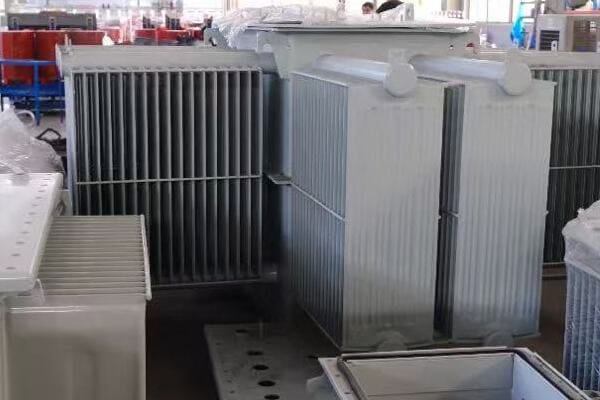
Analyzing Top Chinese Transformer Suppliers
Let’s compare some of the leading suppliers:
- CHBEB (China Bei Er Bian Group)
- TBEA
- SUNTEN
- XD Group
CHBEB (China Bei Er Bian Group)
Strengths:
- Over 60 years of manufacturing history
- Strong in medium-voltage and utility-grade transformers
- Flexible OEM support
I recently collaborated with CHBEB on a project in Southeast Asia. Their ability to customize transformers for specific grid requirements was impressive, showcasing their flexibility in design and manufacturing.
Certifications: IEC 60076, ISO 9001, CE
Export Experience: Extensive projects in Middle East, Africa, and Southeast Asia
Highlights: High transformer efficiency, responsive after-sales team
TBEA
Strengths:
- China’s largest transformer manufacturer
- Capable of producing ultra-high voltage transformers (up to 750kV)
- Global presence in over 40 countries
During a visit to TBEA’s facility, I was amazed by their massive production lines capable of handling transformers up to 1000MVA. This capacity is crucial for large-scale national grid projects.
Certifications: Full set of IEC, ANSI, and national grid-level certifications
Export Experience: Major player in Belt and Road Initiative projects
Highlights: Suitable for mega infrastructure projects, but less flexible for smaller orders
SUNTEN
Strengths:
- Specializes in dry-type and small to medium capacity oil transformers
- Known for shorter lead times and competitive pricing
- Strong presence in Southeast Asian markets
I worked with SUNTEN on a rapid deployment project where their ability to deliver quality transformers on a tight schedule was crucial to the project’s success.
Certifications: ISO, CE, and localized IEC compliance
Export Experience: Strong in Southeast Asia and OEM markets
Highlights: Fast response support, ideal for time-sensitive projects
XD Group
Strengths:
- State-owned enterprise focused on high-voltage transformers
- Strong engineering and customization capabilities
- Expanding presence in Central Asia and Eastern Europe
Here’s a quick comparison of these suppliers:
| Supplier | Key Strength | Best For | Notable Feature |
|---|---|---|---|
| CHBEB | Flexibility | Mid-sized utility projects | Strong OEM support |
| TBEA | Large-scale capacity | National grid projects | UHV capabilities |
| SUNTEN | Fast delivery | Commercial/industrial buyers | Competitive pricing |
| XD Group | Customization | Specialized high-voltage needs | Strong R&D |
Key considerations when comparing suppliers:
- Match the supplier’s strengths with your specific project requirements
- Consider both technical capabilities and after-sales support
- Evaluate their experience in your target market or application
- Assess their ability to meet your timeline and budget constraints
- Look at their track record in handling projects similar to yours
In my experience, the best choice often depends on the specific needs of your project. I’ve seen cases where a supplier’s particular strength in customization or rapid delivery made a significant difference in project outcomes.
For instance, in a recent urban grid modernization project, we chose CHBEB over TBEA despite TBEA’s larger size. CHBEB’s flexibility in customizing transformers for the unique requirements of an aging urban infrastructure proved more valuable than the higher capacity offered by TBEA.
As we move on to discuss red flags to watch out for, remember that even top suppliers can have weaknesses. It’s crucial to conduct thorough due diligence and match your choice with your specific project needs.
Red Flags: How to Avoid Unreliable Suppliers?
Are you worried about falling prey to unreliable transformer suppliers in China? With the vast number of manufacturers in the market, identifying potential pitfalls can be challenging. But what are the key warning signs that should make you think twice about a supplier?
To avoid unreliable oil immersed transformer suppliers in China, watch for red flags such as reluctance to provide verifiable certifications, unusually low prices, vague answers to technical questions, and lack of transparent manufacturing processes. Be wary of suppliers with no track record of exports, those unwilling to allow factory visits, or those with inconsistent communication. These signs often indicate potential quality or reliability issues.
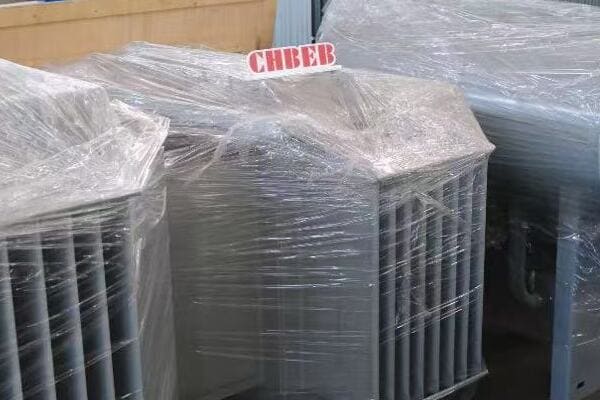
Key Warning Signs to Watch For
Let’s explore the major red flags:
- Certification and Compliance Issues
- Pricing Anomalies
- Lack of Transparency
- Poor Communication and Responsiveness
- Inconsistent Quality Control
Certification and Compliance Issues
Be cautious of suppliers with:
- Reluctance to provide certification documents
- Outdated or irrelevant certifications
- Certifications that can’t be verified independently
I once encountered a supplier who provided a seemingly valid ISO certificate. Upon verification, we discovered it was for a different product line entirely. Always double-check certification claims.
Pricing Anomalies
Be wary of:
- Prices significantly lower than market averages
- Lack of clarity in pricing structures
- Hidden costs or frequent price changes
During a recent project, a supplier offered prices 30% below market average. Further investigation revealed they were using substandard materials. Remember, if a deal seems too good to be true, it probably is.
Lack of Transparency
Watch out for:
- Reluctance to allow factory visits
- Vague answers about manufacturing processes
- Unwillingness to provide detailed technical specifications
Here’s a quick guide to transparency red flags:
| Aspect | Red Flag | Why It’s Concerning |
|---|---|---|
| Factory Visits | Refusal or constant postponement | May be hiding poor facilities |
| Technical Details | Vague or inconsistent answers | Suggests lack of expertise |
| Manufacturing Process | Unwillingness to explain | Might indicate outsourcing or poor practices |
Poor Communication and Responsiveness
Be cautious of suppliers who:
- Take excessively long to respond to inquiries
- Provide inconsistent information
- Show reluctance in addressing concerns or questions
I recall a case where a supplier’s slow and inconsistent communication led to critical misunderstandings about product specifications. This resulted in significant project delays and additional costs.
Inconsistent Quality Control
Look out for:
- Lack of clear quality control processes
- Inability to provide consistent test reports
- Reluctance to allow third-party inspections
Key red flags to watch for:
- Hesitation or refusal to provide verifiable certifications
- Pricing that’s significantly out of line with market norms
- Lack of transparency about manufacturing processes or facilities
- Poor or inconsistent communication
- Resistance to quality control measures or third-party inspections
In my experience, these red flags often indicate deeper issues with a supplier’s reliability or product quality. I’ve seen projects face severe setbacks due to overlooking these warning signs.
For example, in a project a few years ago, we initially chose a supplier offering attractively low prices. However, their reluctance to allow factory visits and vague responses to technical queries should have been clear warning signs. The project faced significant quality issues and delays, ultimately costing far more than if we had chosen a more transparent, albeit initially more expensive, supplier.
As we conclude this guide, remember that identifying these red flags is crucial in your supplier selection process. By being vigilant and thorough in your assessment, you can significantly reduce the risk of partnering with an unreliable supplier.
Conclusion: Your Checklist for Finding a Trusted Chinese Supplier
Selecting a reliable oil immersed transformer supplier in China requires careful consideration of multiple factors. Key aspects include verifying certifications, assessing manufacturing capacity, evaluating export experience, comparing top suppliers, and being vigilant about potential red flags. By thoroughly examining these elements and conducting due diligence, you can significantly increase your chances of finding a trustworthy partner for your transformer needs.
Remember, at chbeb-ele, we’re not just sharing information – we’re empowering you to be part of the solution in creating a secure, clean, and efficient energy future. Let’s continue this journey together.
Recent Post
Quick Message
Request A free quote
We'd like to work with you
- +86 15558785111
- chbebgroup@chbebpower.com
- +86 15558785111
What We Do
CHINA BEI ER BIAN (CHBEB) GROUP, with 218 million in registered capital, originated from Beijing Beierbian Transformer Group. Headquartered in Beijing for R&D, it operates major production bases in Nanjing and Yueqing, producing high-quality products.
Latest Post
Latest Product
Contact Us
- +86 15558785111
- chbebgroup@chbebpower.com
- +86 15558785111
BeiJing
No 3,RongJing East Road,BeiJing Economic Technological Development Area,BeiJing,China
JiangSu
No 7️Xiangfeng Road,Jiangning,NanJing,JiangSu,China
WenZhou
No.211, Wei 16 Road, Industrial Zone, Yueqing, Wenzhou, Zhejiang, China.
XiangYang Industrial Zone ,YueQing,WenZhou,ZheJiang,China

